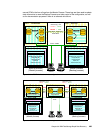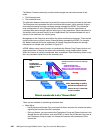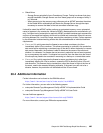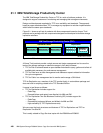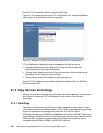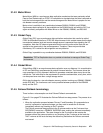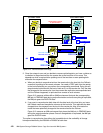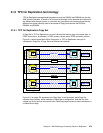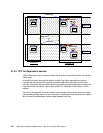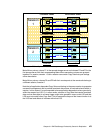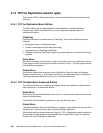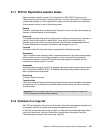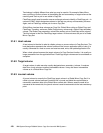
Chapter 31. IBM TotalStorage Productivity Center for Replication 471
31.4.2 Metro Mirror
Metro Mirror (MM) is a synchronous data replication mechanism that was previously called
Peer-to-Peer Remote copy or PPRC. I/O completion is signaled when the data is secured on
both the local storage server and the remote storage server. Metro Mirror is popular for two
site disaster recovery solutions.
Metro mirror is available in any combination between DS6000, DS8000, and ESS800.
Synchronous data replication is also available on the DS4000 family and with the SVC, but
again not directly compatible with Metro Mirror on the DS6000, DS8000, and ESS 800.
31.4.3 Global Copy
Global Copy (GC) is an asynchronous data replication mechanism that used to be called
PPRC for eXtended Distance or PPRC-XD. Asynchronous in this context means that the data
transmission between local and remote storage servers is separated from signaling the I/O
completion. Note that GC does not guarantee that the arriving writes at the local site are
applied to the remote site in the same sequence. Therefore, it does not provide data
consistency. GC is suited for data migration over any distance.
Global Copy is possible in any combination between DS6000, DS8000, and ESS 800.
31.4.4 Global Mirror
Global Mirror (GM) is an asynchronous data replication over any distance. It is a combination
of GC and FlashCopy complemented by unique firmware features. The firmware drives the
copy operations in a fully autonomic fashion to guarantee consistent data at any time at the
remote site. This holds also for the requirement to provide consistent data, at any time, which
can be spread over more than a single storage server.
GM is also the base for a two-site disaster recovery solution involving any DS6000, DS8000,
and/or ESS 800. The function as such is also possible between products of the DS4000
family and the SVC.
31.4.5 Failover/Failback terminology
There is often a misconception on what Failover/Failback commands do.
Figure 31-3 on page 472 illustrates the Failover/Failback two-step process. The process is as
follows:
1. When the replication process between Primary P and Secondary S is suspended as a
result of a planned or unplanned outage, you may want to access the S volumes
immediately without any checking on the P volumes.
The Failover command always points to the S volumes and turns the S volumes from
SECONDARY state into a PRIMARY SUSPEND state, making the volumes immediately
available to the application. This state change for the S volumes at the remote site
happens without any communication or any checking of the P volumes at the local site.
The P volumes at the local site keep the status they had before the Failover command
was issued.
Restriction: TPC for Replication does not provide an interface to manage a Global Copy
environment.



